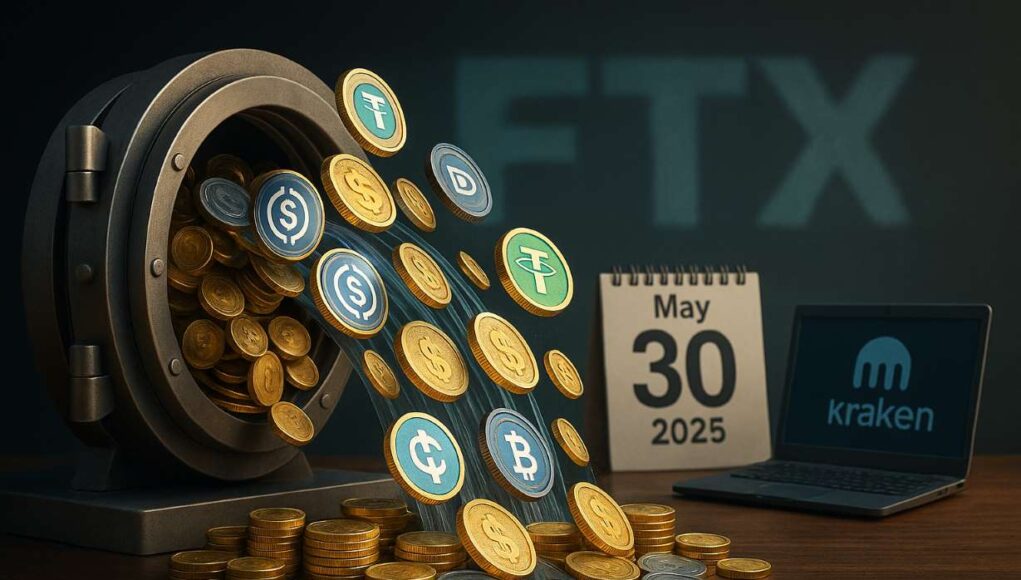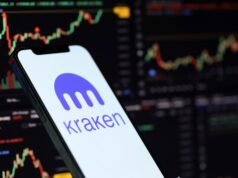After months of anticipation, the FTX Recovery Trust has initiated the second major creditor repayment phase. More than $5 billion in stablecoins began distribution on May 30, 2025, making it one of the largest repayments in crypto bankruptcy history. This marks a critical step toward resolving claims tied to the exchange’s 2022 collapse.
This time, payments are made entirely in stablecoins, including USDC and USDT, giving creditors immediate access to liquid assets.
Structured Repayments Backed by Key Custodians
Kraken and BitGo, two trusted crypto custodians selected for their regulatory strength and infrastructure, handle the FTX creditor payout. Both began releasing funds on May 30, ensuring accurate and secure disbursement.
Repayments vary across creditor classes, based on the value of assets as of November 11, 2022, the date FTX filed for bankruptcy. The payout structure is as follows:
- Dotcom Customer Entitlement Claims – 72%
- US Customer Entitlement Claims – 54%
- Convenience Claims – 120%
- General Unsecured Claims – 61%
- Digital Asset Loan Claims – 61%
These figures were approved as part of the Chapter 11 plan and reflect negotiations finalized earlier this year.
Exclusions Based on Jurisdictional Barriers
Not all creditors will receive payments. Regulatory and legal restrictions exclude users from over 160 countries. Affected regions include Egypt, Iran, Russia, Greenland, Pakistan, and others.
According to the FTX Recovery Trust, accounts tied to these jurisdictions remain frozen. Payouts are on hold pending further clarification from legal authorities.
Market Liquidity and Crypto Recovery Hopes
This $5 billion distribution introduces a significant injection of stablecoin liquidity into the market. Analysts estimate that the payout accounts for more than 2% of the total stablecoin supply.
Industry watchers believe this liquidity could revive trading volumes, especially in altcoins, as many retail creditors now have spendable funds. Although markets remained relatively calm over the weekend, trading desks are bracing for increased activity in the coming days.
Mixed Reactions: Relief vs. Resentment
Despite the scale of the repayment, not all FTX creditors are pleased. Critics argue that using 2022 asset prices for valuation shortchanges users.
For example, Bitcoin was trading below $17,000 at the time of bankruptcy. Today, it trades above $65,000. This discrepancy means many creditors are recovering far less than the current value of their original holdings.
Some legal representatives are exploring whether they can challenge these payout calculations under existing bankruptcy statutes.
What Comes Next?
This second repayment round is significant, but it doesn’t close the case. Trustees are still pursuing asset recovery and clawbacks tied to venture investments and other FTX holdings.
A third distribution phase may begin later in 2025, though the trust has not disclosed any specifics yet. Legal proceedings involving former executives, including Sam Bankman-Fried, also remain active in U.S. courts.
Final Thoughts
FTX’s $5 billion stablecoin repayment shows that a measured, professional resolution can follow even one of the industry’s most catastrophic collapses. Using stablecoins and secure custodians like Kraken and BitGo, the FTX Recovery Trust has managed to restore part of what was lost.
However, the continued exclusion of certain users and the use of outdated asset prices serve as reminders that recovery, while substantial, is still far from complete.
Readers’ frequently asked questions
How do I know if my repayment has been processed yet?
You can check your repayment status by logging into the FTX Claims Portal or the platform (e.g., Kraken or BitGo) assigned to your payout. Eligible users received emails with distribution details. If you haven’t received one, ensure your claim was verified and that you’re not in an excluded jurisdiction.
Why are repayments based on November 2022 prices?
Under U.S. bankruptcy law, asset values are typically frozen at the time of filing. FTX filed for Chapter 11 protection on November 11, 2022. Creditors are being repaid based on the value of their assets at that time, not current market prices.
Can excluded creditors still receive repayment in the future?
Possibly. The repayment currently excludes creditors in sanctioned or high-risk jurisdictions due to compliance restrictions. However, the FTX Recovery Trust has stated that these accounts remain frozen, not forfeited, pending legal developments or jurisdictional changes.
What is in it for you? Action items you might want to consider
1. Review your claim class and payout percentage
Check which category your claim falls into (e.g., Dotcom, US, Convenience) and confirm that your repayment aligns with the announced percentage for that class.
2. Plan for the market impact of increased stablecoin liquidity
Be aware that $5B in new stablecoins may affect short-term price action, especially in altcoins. Adjust your trading strategy accordingly.
3. Monitor upcoming announcements about the third payout round
The FTX Recovery Trust may announce a third distribution phase later in 2025. Stay informed to act quickly when they release the timeline and eligibility details.











[…] >>> Read more: FTX Recovery Trust Commences $5B Repayment in Stablecoins […]
[…] The FTX Recovery Trust has already started distributions, with more scheduled later this year. A successful recovery against GDA would increase funds available for FTX creditors. […]